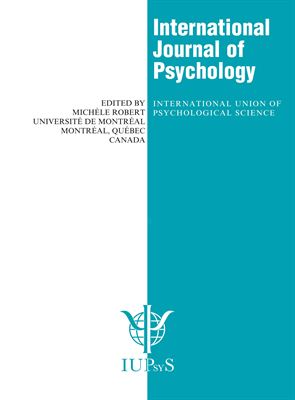Homophobia in Sport: Sporting Identity, Authoritarian Aggression, and Social Dominance

Homophobia seems to be particularly entrenched in sport and exercise settings of all kinds. But why is this the case?
www.tandfonline.com/doi/full/10.1080/00207594.2012.713107
Homophobia exists in many areas of life. It also seems to be particularly entrenched in sport, exercise and physical education (PE) settings of all kinds. But why is this the case?
To find out, an international trio of psychologists have become the first to examine the relationship between investment in physical/sporting identity, certain psychological attributes, and homophobia in PE/sport participants.
The authors, Kerry S. O’Brien, Heather Shovelton and Janet D. Latner, whose pioneering work appears in the International Journal of Psychology, had two goals in mind. First, they wanted to address the lack of quantitative work on homophobia in PE and sport settings. Second, they wanted to examine the role played by established sociological constructs in homophobia. Since other forms of bias such as racism are associated with conservative ideologies and personality traits such as authoritarianism and social dominance orientation (SDO - a preference for social hierarchies), the authors wanted to see whether such traits were also associated with homophobia.
Because heterosexual masculinity and physical identity are defined by physical attributes for both men and women (which gay men and lesbians are often seen as threatening), the authors also explored the relationship between ‘sporting identity and athletic self-concept related constructs’ and homophobic attitudes. The authors posited that individuals who identify strongly as members of a physically oriented group (such as PE/sport science students), place a high value on physical attributes, abilities and appearance (such as strength or skill), or have more conservative ideologies, or may hold more negative attitudes towards those whose beliefs and attitudes differ from their own.
The conclusions bore out the researchers’ hypothesis: anti-gay and anti-lesbian prejudice was greater in PE students than non-PE students, and males had greater anti-gay, but not anti-lesbian, prejudice than females. The differences between the two groups appear to be explained by differences in the conservative psychological traits; higher scores for authoritarianism and SDO were significant predictors. In addition, physical identity and athletic attributes based around masculine ideals also appear related to prejudice in males.
The authors conclude that sport settings may benefit from ‘prejudice reduction initiatives that address the overinvestment in physical attributes and masculine ideas’ and which reinforce social equality and diversity. Such initiatives also need to address the contextual and psychosocial factors that underpin homophobia. While there is of course no suggestion that sportiness itself encourages prejudice, the authors warn that the high levels of anti-gay and anti-lesbian sentiment they found ‘may be due to the contextual influences that enhance or support the expression of homophobia’. In other words, prejudice can become entrenched in a group over time, in accordance with social identity theory (SIT).
The findings presented in this ground-breaking study provide vital new quantitative evidence to support qualitative and anecdotal reports that homophobia is higher in sport and PE than in other settings, making it essential reading for the educators, coaches and sporting professionals who must work together to root it out.
www.tandfonline.com/doi/full/10.1080/00207594.2012.713107
Rob Keery, Journals Marketing Manager, Routledge Psychology Journals, 27 Church Road, Hove, East Sussex, BN3 2FA, UK. Tel. (0) 207 017 7725. Fax. (0) 20 7017 6717.


